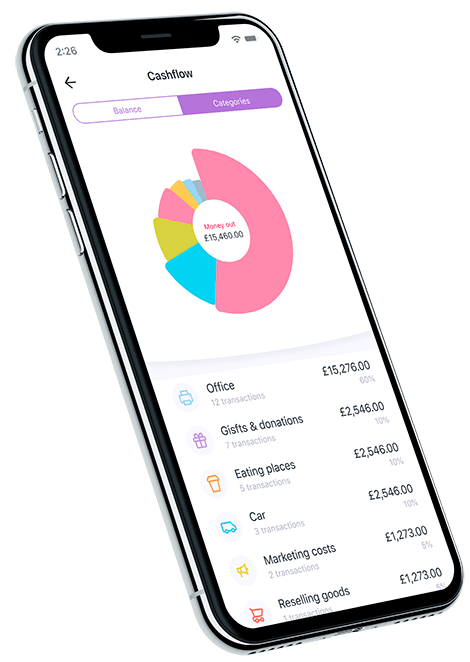How to Run a SWOT Analysis for Your Business

Like you, your business needs regular health check ups. But you obviously can’t just take your business to the doctor, so what can you do to perform a general check up on your business? Well that’s where a SWOT analysis comes in.
What is a SWOT Analysis?
SWOT stands for Strengths, Weaknesses, Opportunities, and Threats and is a simple and concise way to analyse your business for things that are already great and things that you can improve upon. Strengths and weaknesses are internal to your business. They are things your business has control over like location, product, and expertise. Opportunities and threats are external, things you can’t control such as competitors, market fluctuations and suppliers, for example.
In a SWOT analysis, you look at all of these elements to garner an idea of how your business is doing. It’s fair to say that you want to have more strengths and opportunities than weaknesses and threats, but a healthy balance could be good motivation for you to work hard to switch that balance towards the positive.
Why do you need a SWOT Analysis?
In general, it’s always beneficial to run checks on the health of your business, especially if you run a small business by yourself. Whether working alone or working with a small team of employees, it’s useful to know where you can improve and what you can leave alone for the time being. And running a check like this can really help you pinpoint any weak areas that need to be addressed that you may not have noticed before. Perhaps most of your problems are external, in which case you need to focus on mitigating factors outside your business, or maybe they’re more internal and you need to rearrange your own business to run better. A SWOT analysis will reveal all of this.
How To Run A SWOT Analysis?
When conducting this analysis, make sure you keep an open mind and take your time thinking through each section individually. If you have employees, this is a good exercise to do together.
Strengths
The first element to a SWOT analysis is strengths. These are things that your company does well, assets that you have, or the overall pluses to your business. They can be tangible things like property in the middle of a busy tourist town, or a unique product. Or your strengths could be something more intangible like unique brand values.
When you’re listing your strengths, here are some things to think about:
- Any assets you have like property, intellectual property, capital, etc
- Your employees - maybe you have a hardworking set of employees that really help your business run efficiently
- Any advantages you have over your competitors
- Is your business’ bricks and mortar location really ideal?
Weaknesses
The second thing you want to look at are your weaknesses. Again, weaknesses are unique and internal to your business. This can include things your company needs to work on, things the business lacks that it needs, or even things that your competitors do better than you. For example, maybe you are the only employee and you need more employees to help the business run smoothly. Maybe you lack capital to get certain materials for your business.
There are many things you might be able to put in this section but to make it clearer, think about these things when examining your weaknesses:
- Employees or connections that you lack, but would be helpful to your business
- Any capital, property, or funds that you need but don’t currently have
- If you have a physical property location, is it less than ideal?
- Employees that might pose a threat
- Competitors that have an advantage over you
- Your own business ideals and selling points that may need clarification
Opportunities
Moving onto the external factors, the first thing you want to look at is any opportunities you have. These are positive aspects outside of your business that you have no control over, but they add to your business on the whole. Maybe you’ve entered the market while it’s relatively new, maybe there are very few competitors in your area. This could also apply to any suppliers you have. Maybe you found a loyal supplier who gives you discounts, this could also be an opportunity you have.
When thinking about opportunities, think about these things:
- The strength of your position in the market
- Any lack of competitors
- If you need certain materials to make your product, any good relationships with suppliers
- Regulations that work in your favour
- Positive press/media coverage
- Favour among target market
Threats
The last thing you’ll look at is threats. Like weaknesses, threats are negative but this time they are external factors you have limited to no control over. This can include things like expensive raw materials to make your product, an oversaturated market, or maybe bad customer reviews.
Here are some things to consider when thinking about your threats:
- Any issues with suppliers
- Expensive supplies
- How saturated your market is
- The amount of negative reviews of your business
- Any bad press/media coverage
- Regulations that make it harder/more expensive for you to conduct business
Let’s do a short example SWOT analysis!
For this example, let’s say you own a pub in the city centre that is doing well, but you’re wondering how to cut costs in some places.
Strengths
- Special menu item only sold at our pub
- Loyal, sociable workers that have a good rapport with customers
- Location in city centre
Weaknesses
- Expensive rent
- There are a few other pubs in the area
- New furniture needs to be purchased for the pub
Opportunities
- Local food supplier has low prices and quality products
- Many good reviews across all platforms
- Loyal customer base
Threats
- Growing vegan/vegetarian trend, menu is mostly meat-based
- Expensive liquor license
- Alcohol supplier is expensive
These obviously aren’t all the possible strengths, weaknesses, opportunities, and threats, but this list shows us a few things: our costs seem to be the most expensive when it comes to rent, alcohol, and decorations/furniture. As far as cutting costs, something like rent is a point you can’t concede on, but you could definitely look for a cheaper alcohol supplier as well as a cheaper furniture supplier. You can also see you have a loyal customer base that talks about you on social media often. So maybe host a fundraiser to help raise money for a redecoration. Another interesting thing to note is that some things can go in both categories. Look at our pub’s location — it’s in a great spot, which is a strength, but the rent is high, which is a weakness. Sometimes this may happen! But try not to focus too much on the negatives, just keep them in mind and if they ever start to outweigh the positives, then you can take action.
It’s best to remember that your SWOT analysis might change every time you do it. You might find that certain points shifted categories, or that new points emerge in certain categories — that’s normal with a growing business. Use the SWOT analysis as a means to make your business the best it can be and re-evaluate as you go! The ultimate goal is to make your business into one that runs smoothly and efficiently and this is a great tool to have in your arsenal.

Download now!
And you can open a business account with all the support you need in minutes.




